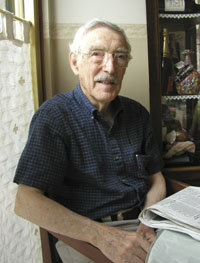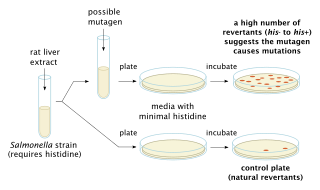
The Ames test is a widely employed method that uses bacteria to test whether a given chemical can cause mutations in the DNA of the test organism. More formally, it is a biological assay to assess the mutagenic potential of chemical compounds. A positive test indicates that the chemical is mutagenic and therefore may act as a carcinogen, because cancer is often linked to mutation. The test serves as a quick and convenient assay to estimate the carcinogenic potential of a compound because standard carcinogen assays on mice and rats are time-consuming and expensive. However, false-positives and false-negatives are known.
Mutagenesis is a process by which the genetic information of an organism is changed by the production of a mutation. It may occur spontaneously in nature, or as a result of exposure to mutagens. It can also be achieved experimentally using laboratory procedures. A mutagen is a mutation-causing agent, be it chemical or physical, which results in an increased rate of mutations in an organism's genetic code. In nature mutagenesis can lead to cancer and various heritable diseases, and it is also a driving force of evolution. Mutagenesis as a science was developed based on work done by Hermann Muller, Charlotte Auerbach and J. M. Robson in the first half of the 20th century.

In genetics, a mutagen is a physical or chemical agent that permanently changes genetic material, usually DNA, in an organism and thus increases the frequency of mutations above the natural background level. As many mutations can cause cancer in animals, such mutagens can therefore be carcinogens, although not all necessarily are. All mutagens have characteristic mutational signatures with some chemicals becoming mutagenic through cellular processes.
Genotoxicity is the property of chemical agents that damage the genetic information within a cell causing mutations, which may lead to cancer. While genotoxicity is often confused with mutagenicity, all mutagens are genotoxic, but some genotoxic substances are not mutagenic. The alteration can have direct or indirect effects on the DNA: the induction of mutations, mistimed event activation, and direct DNA damage leading to mutations. The permanent, heritable changes can affect either somatic cells of the organism or germ cells to be passed on to future generations. Cells prevent expression of the genotoxic mutation by either DNA repair or apoptosis; however, the damage may not always be fixed leading to mutagenesis.
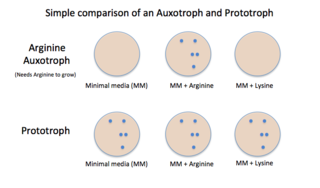
Auxotrophy is the inability of an organism to synthesize a particular organic compound required for its growth. An auxotroph is an organism that displays this characteristic; auxotrophic is the corresponding adjective. Auxotrophy is the opposite of prototrophy, which is characterized by the ability to synthesize all the compounds needed for growth.

Methylcholanthrene is a highly carcinogenic polycyclic aromatic hydrocarbon produced by burning organic compounds at very high temperatures. Methylcholanthrene is also known as 3-methylcholanthrene, 20-methylcholanthrene or the IUPAC name 3-methyl-1,2-dyhydrobenzo[j]aceanthrylene. The short notation often used is 3-MC or MCA. This compound forms pale yellow solid crystals when crystallized from benzene and ether. It has a melting point around 180 °C and its boiling point is around 280 °C at a pressure of 80 mmHg. Methylcholanthrene is used in laboratory studies of chemical carcinogenesis. It is an alkylated derivative of benz[a]anthracene and has a similar UV spectrum. The most common isomer is 3-methylcholanthrene, although the methyl group can occur in other places.

Methyl carbamate (also called methylurethane, or urethylane) is an organic compound and the simplest ester of carbamic acid (H2NCO2H). It is a colourless solid.

Benzo[j]fluoranthene (BjF) is an organic compound with the chemical formula C20H12. Classified as a polycyclic aromatic hydrocarbon (PAH), it is a colourless solid that is poorly soluble in most solvents. Impure samples can appear off white. Closely related isomeric compounds include benzo[a]fluoranthene (BaF), bendo[b]fluoranthene (BbF), benzo[e]fluoranthene (BeF), and benzo[k]fluoranthene (BkF). BjF is present in fossil fuels and is released during incomplete combustion of organic matter. It has been traced in the smoke of cigarettes, exhaust from gasoline engines, emissions from the combustion of various types of coal and emissions from oil heating, as well as an impurity in some oils such as soybean oil.
The Environmental Mutagenesis and Genomics Society (EMGS) is a scientific society "for the promotion of critical scientific knowledge and research into the causes and consequences of damage to the genome and epigenome in order to inform and support national and international efforts to ensure a healthy, sustainable environment for future generations."
Wang Aiping is a Chinese pharmacologist and toxicologist. For over 20 years, Wang has researched drug and toxicity testing and has experience in new drug development. Since 2001, he has been Director of Drug Safety Evaluation and Research at the Academy of Medical Sciences, Peking Union Medical College and was also made General Manager of Technological development at Peking Union Medical College's Jianhao Pharmaceutical Technology Development Co., Ltd.
For pharmacology and genetics, the Umu Chromotest, first developed and published by Oda et al., is a biological assay (bioassay) to assess the genotoxic potential of chemical compounds. It is based on the ability of DNA-damaging agents to induce the expression of the umu operon. In connection with the damage inducible (din) genes recA, lexA and umuD, the umuC gene is essentially involved in bacterial mutagenesis through the SOS response.
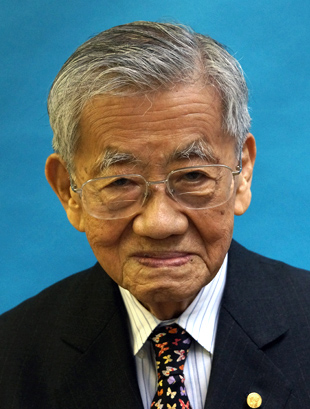
Takashi Sugimura was a Japanese biochemist, famous for research on chemical carcinogens. He received the Japan Prize for the contribution to establishment of fundamental concept on causes of cancer. He was elected as President of the Japan Academy on October 15, 2013, serving till 2016 and was replaced with Hiroshi Shiono.
Rajani A. Bhisey is an Indian scientist. She specializes in the field of environmental carcinogenesis and molecular epidemiology of cancer, occupational hazards.
Bernd Kaina, born on 7 January 1950 in Drewitz, is a German biologist and toxicologist. His research is devoted to DNA damage and repair, DNA damage response, genotoxic signaling and cell death induced by carcinogenic DNA damaging insults.
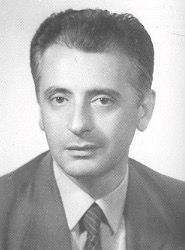
Francesco De Lorenzo is an Italian physician and politician and is a member of the Italian Liberal Party.

Curtis. C. Harris is the head of the Molecular Genetics and Carcinogenesis Section and chief of the Laboratory of Human Carcinogenesis at the Center for Cancer Research of the National Cancer Institute, NIH.
Gareth Jenkins is a professor of molecular carcinogenesis at Swansea University Medical School. Based in the Institute of Life Science, his interests include the study of DNA mutation induction and the role of DNA mutations as diagnostic biomarkers for cancer. He is also director of research of the medical school and a “research leader” for Health and Care Research Wales. Jenkins' research gained much recognition during 2016 when his revolutionary cancer-detecting blood test was widely covered in the British press.
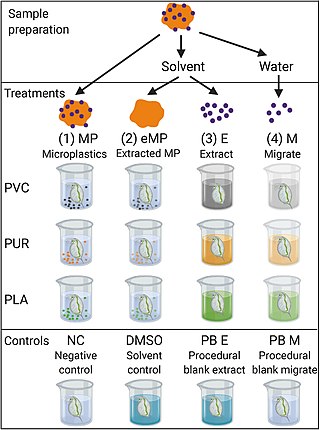
A bioassay is an analytical method to determine the potency or effect of a substance by its effect on living animals or plants, or on living cells or tissues. A bioassay can be either quantal or quantitative, direct or indirect. If the measured response is binary, the assay is quantal; if not, it is quantitative.
Sheldon Wolff was an American radiobiologist, cytogeneticist, and environmental health expert on mutagenic chemicals.

Dr. Bruce Hammock is an American entomologist, chemist and toxicologist. He is known for his research regarding improving pest control agents, monitoring and determining the human and environmental health effects of pesticides and in medicine work on the inflammation resolving branch of the arachidonate cascade leading to a drug candidate to treat pain and inflammatory disease. Additionally, he made many advances in U.S. agriculture which led to him receiving the Frasch and Spencer Awards of the ACS and the Alexander von Humboldt Award in Agriculture. His early work tested the basic hypothesis in both insects and mammals that regulation of chemical mediators could be as much by specific degradation as by biosynthesis. He exploited this fundamental knowledge both in agriculture and in human pharmacology.
